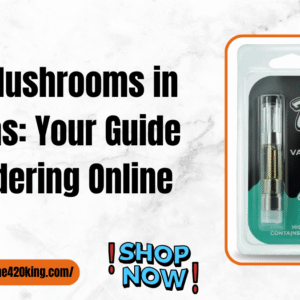Have you ever dreamed of traveling the world — and actually getting paid for it?
A travel blog can make that dream a reality. With the right setup, creativity, and consistency, you can share your adventures, inspire others, and build a profitable online business.
Let’s break down how to start a travel blog step-by-step, plus see examples of successful bloggers who are already living the dream.
Table of Contents
Toggle🧭 Step 1: Choose a Niche & Name Your Blog
Travel is a vast topic — so finding a focus helps you stand out.
Ask yourself:
-
Do you want to write about budget travel or luxury escapes?
-
Are you a solo traveler, family traveler, or digital nomad?
-
Will you focus on specific destinations (e.g., Southeast Asia, Europe) or themes (e.g., food travel, adventure, eco-tourism)?
Example niches:
-
“Backpacking on a Budget”
-
“Couples Travel & Romance Destinations”
-
“Travel Photography & Storytelling”
-
“Remote Work & Digital Nomad Lifestyle”
Once you have your niche, pick a memorable domain name — something short, catchy, and easy to spell.
(Example: “ReadyToTravelling.com” — a perfect name that sparks curiosity and adventure!)
💻 Step 2: Set Up Your Travel Blog Website
You’ll need three main things:
-
Domain name: (e.g.,
readytotravelling.com)
→ Register it via Namecheap or GoDaddy. -
Hosting:
Use fast, reliable hosting like Bluehost, Hostinger, or SiteGround — they integrate easily with WordPress. -
Platform:
Install WordPress.org — the most popular blogging platform. It’s free, flexible, and easy to monetize.
Then, install a clean and responsive travel blog theme such as:
-
Astra
-
OceanWP
-
Neve
-
Wanderlust (for WordPress)
Customize your layout, add pages like Home, About Me, Destinations, Blog, and Contact — and your website is ready to start travelling online!
✈️ Step 3: Create Engaging, SEO-Friendly Content
Content is what draws readers — and income — to your site.
Ideas for travel blog posts:
-
“Top 10 Hidden Gems in Bali”
-
“How I Traveled Europe for Under $1000”
-
“Digital Nomad Life in Thailand”
-
“Best Travel Gear for 2025”
Tips:
-
Use original photos and videos.
-
Optimize with SEO keywords using tools like Ubersuggest or Ahrefs.
-
Add maps, itineraries, and personal stories to connect with readers.
-
Post consistently — 1–2 articles per week is a good start.
💰 Step 4: Monetize Your Blog & Get Paid
Once your site has quality content and steady traffic, it’s time to earn!
Popular monetization options:
-
Google AdSense – Display ads on your site and earn per click or impression.
-
Affiliate Marketing – Recommend travel gear, hotels, tours, or insurance and earn commissions.
-
Sponsored Posts – Partner with brands, tourism boards, or hotels.
-
Digital Products – Sell travel guides, photography presets, or e-books.
-
Freelance Writing – Offer your writing or photography to travel publications.
🏆 Step 5: Apply for Google AdSense
To get approved, your blog must:
-
Have original, valuable content (at least 15–20 well-written posts).
-
Be easy to navigate and mobile-friendly.
-
Include essential pages: About, Contact, Privacy Policy, and Terms of Use.
-
Follow AdSense Program Policies.
After approval, place ads strategically on your site (sidebar, within posts, header/footer).
🌟 Step 6: Learn from Successful Travel Blogs
Here are some real-world examples that show what’s possible:
-
The Planet D – Dave & Deb’s global adventures earn them six-figure income through ads, affiliates, and sponsorships.
🌐 www.theplanetd.com -
Expert Vagabond – Matthew Karsten shares photography and adventure stories with AdSense and affiliate income streams.
🌐 www.expertvagabond.com -
Nomadic Matt – One of the internet’s biggest travel blogs; monetized via ads, affiliate links, and courses.
🌐 www.nomadicmatt.com -
A Broken Backpack – Melissa Giroux’s blog focuses on backpacking, expat life, and travel resources.
🌐 www.abrokenbackpack.com
These blogs started small — but with passion and persistence, they now fund full-time travel lifestyles.
🚀 Step 7: Grow Your Audience & Build Authority
Once your blog is up and running, focus on growth and visibility.
Key growth strategies:
-
Email Marketing: Build a newsletter to share new posts and exclusive tips. Use tools like ConvertKit or Mailchimp.
-
Social Media: Create travel content for Instagram, Pinterest, TikTok, and YouTube. Visual storytelling drives traffic to your blog.
-
Guest Posting: Write guest articles for other travel sites — this helps build backlinks and authority.
-
Networking: Join travel blogger groups and attend travel conferences like TBEX (Travel Blog Exchange).
-
Collaborations: Partner with brands or other bloggers for joint content, giveaways, or interviews.
Remember, building a travel blog is a long-term journey — not an overnight success. Stay consistent, improve your writing and photography, and engage with your readers.
🌐 Step 8: Maintain & Optimize Your Blog
To keep your site performing well:
-
Regularly update old content with new info and links.
-
Use tools like Google Analytics and Google Search Console to track performance.
-
Improve your site speed using caching plugins like WP Rocket or LiteSpeed Cache.
-
Ensure your blog is mobile-optimized, as most readers browse on their phones.
Also, diversify your income by adding YouTube videos, podcasts, or travel eBooks — expanding your reach and credibility.
🌅 Final Thoughts
Starting a travel blog isn’t just about pretty pictures — it’s about storytelling, consistency, and creating value for others.
With your site — ReadyToTravelling.com — you can share your adventures, inspire wanderlust, and even fund your next journey!
So pack your camera, write your first post, and take the first step toward a life where you travel, create, and get paid. 🌍✈️💻
Would you like me to write the homepage and “About” page content for ReadyToTravelling.com next — optimized for Google AdSense approval and SEO keywords (like travel tips, travel blog, travel guides, and destinations)?
It’ll make your website fully “ready to travel” and publish immediately.





